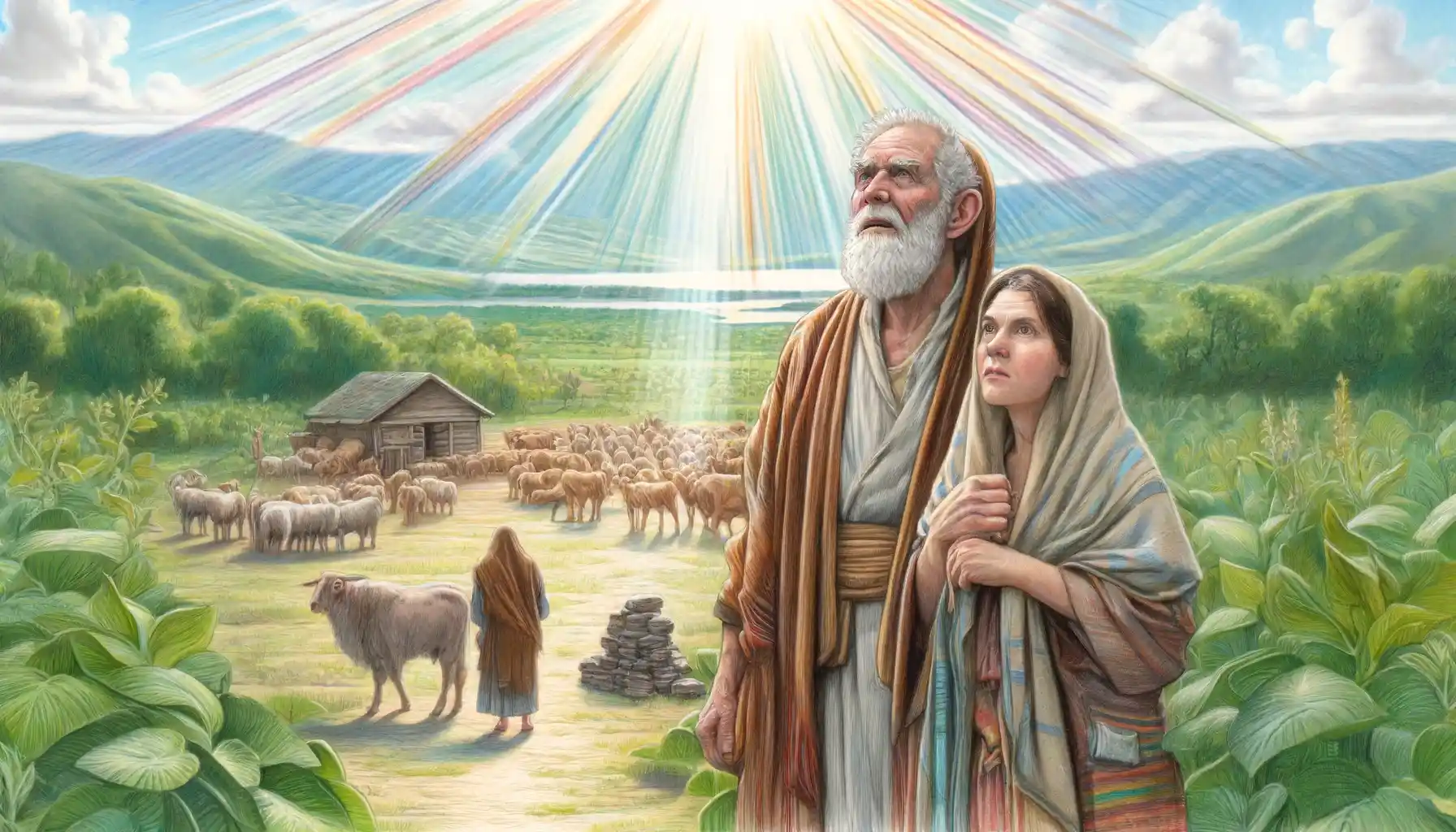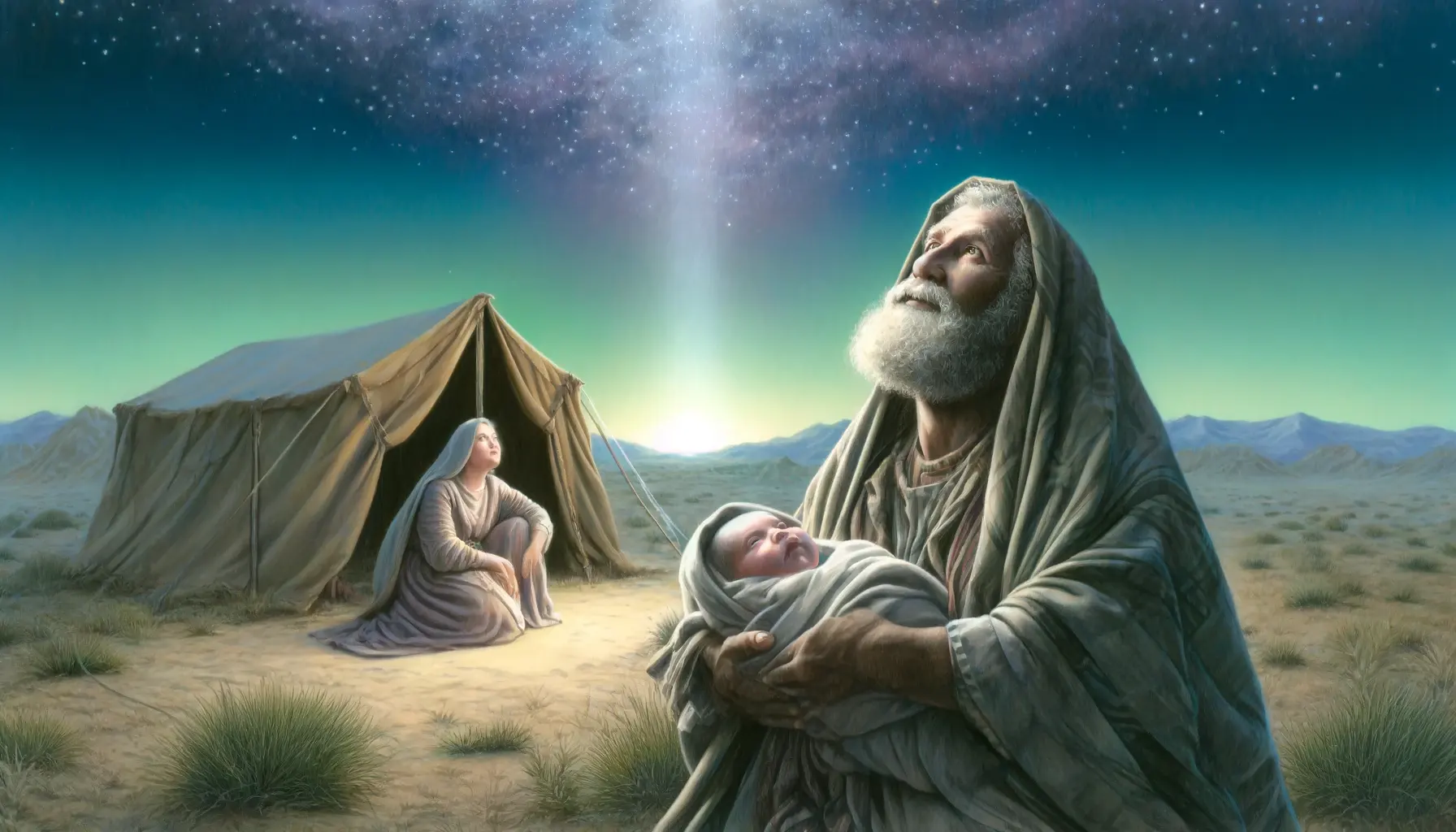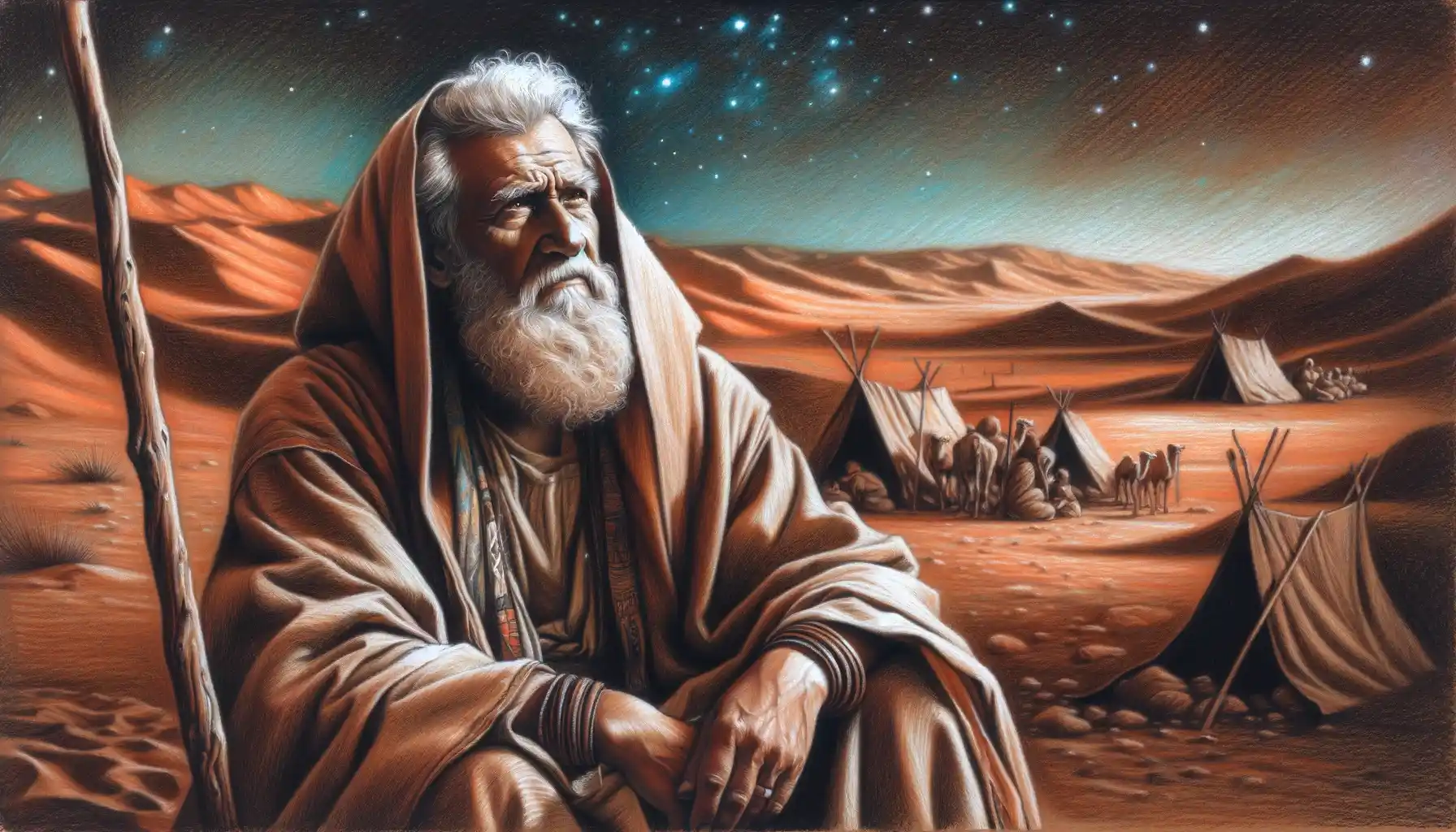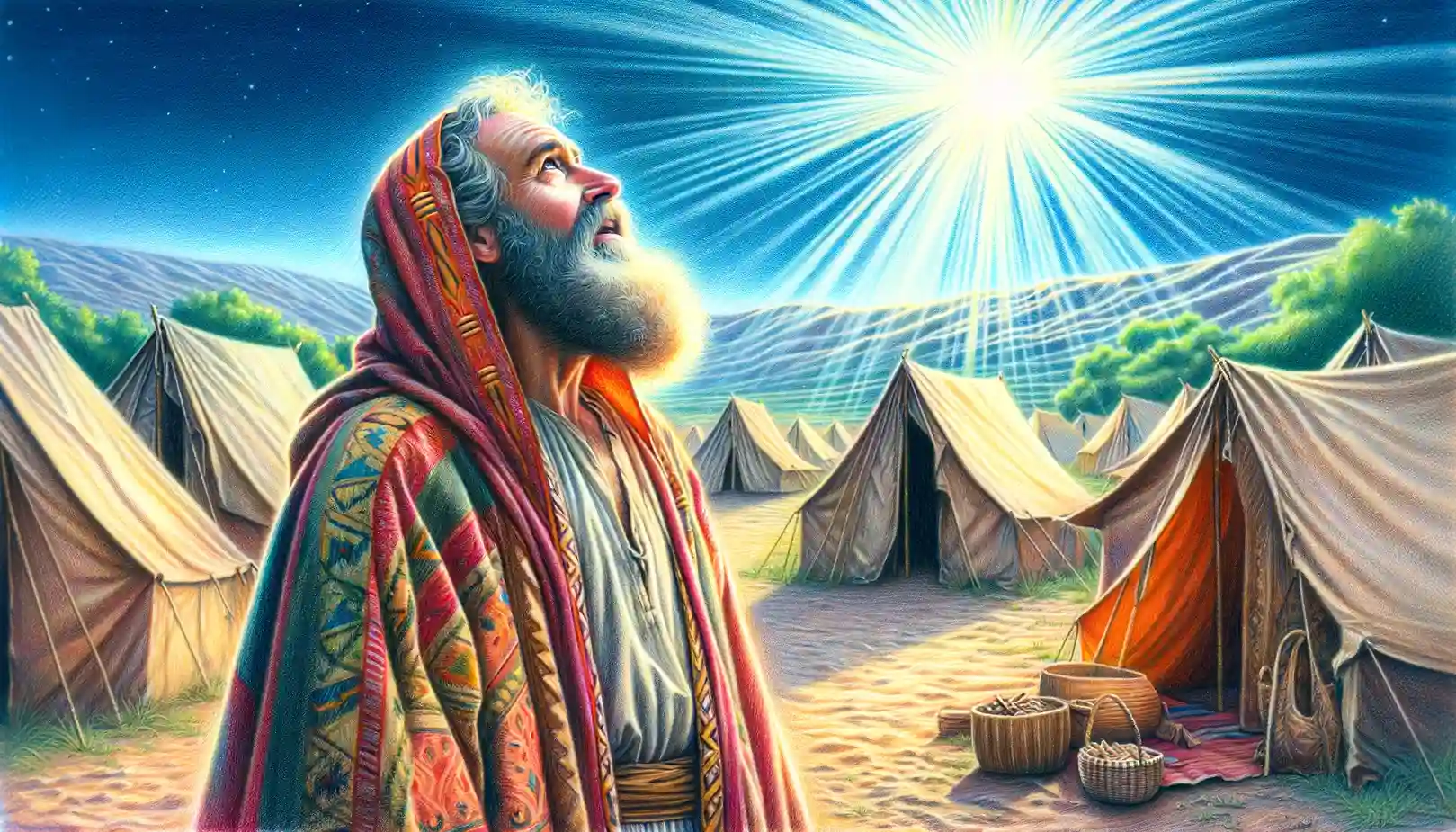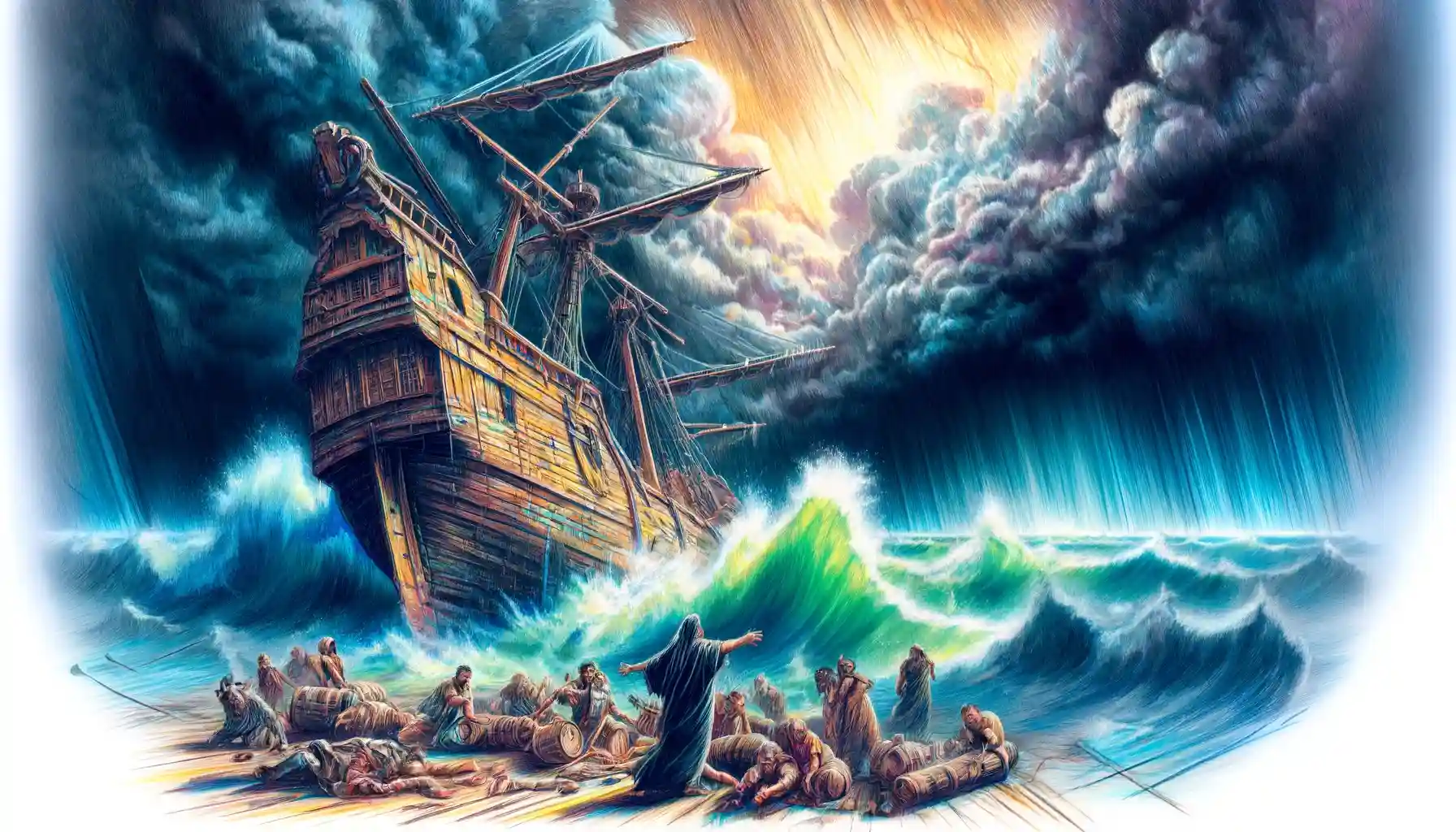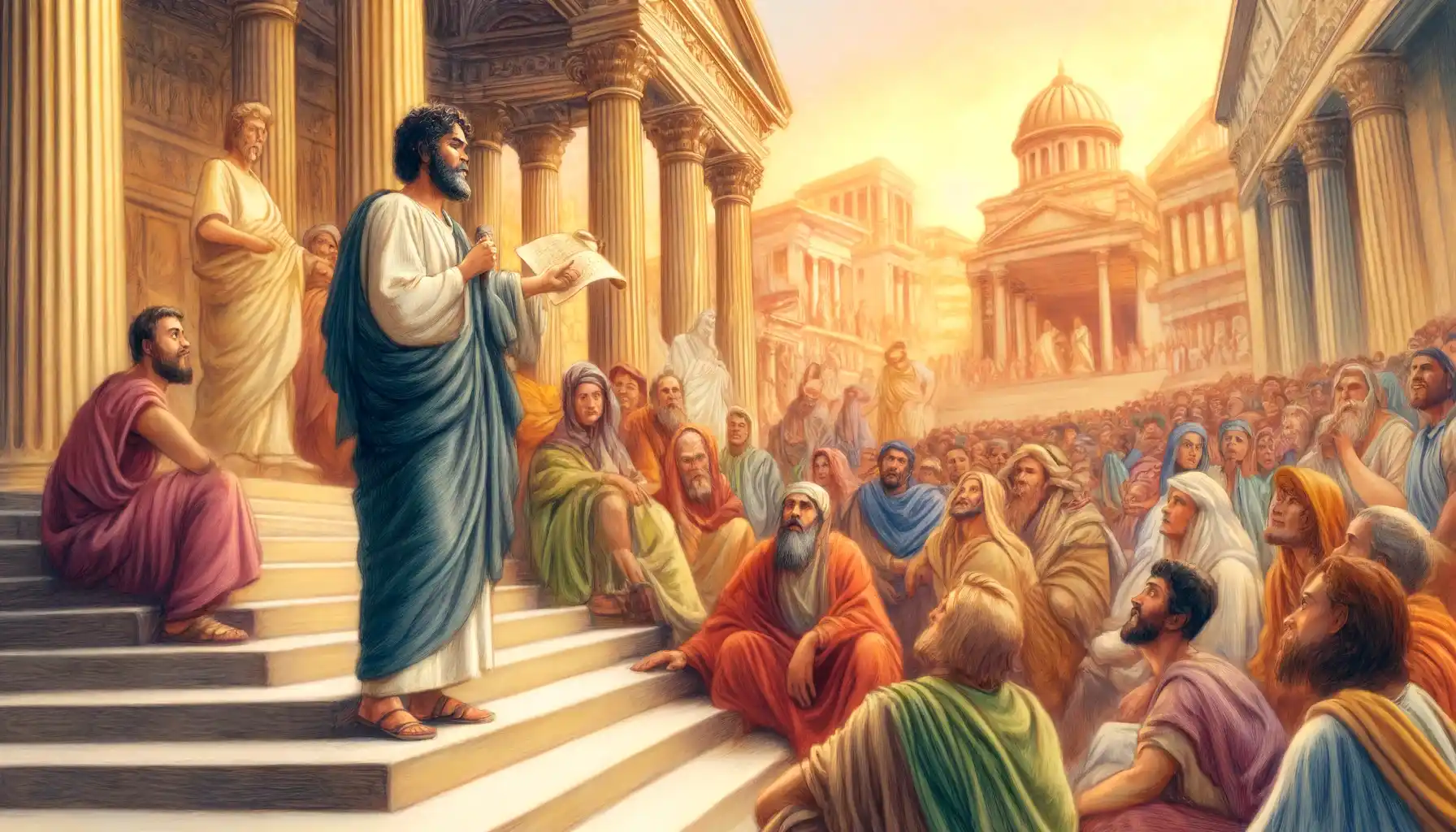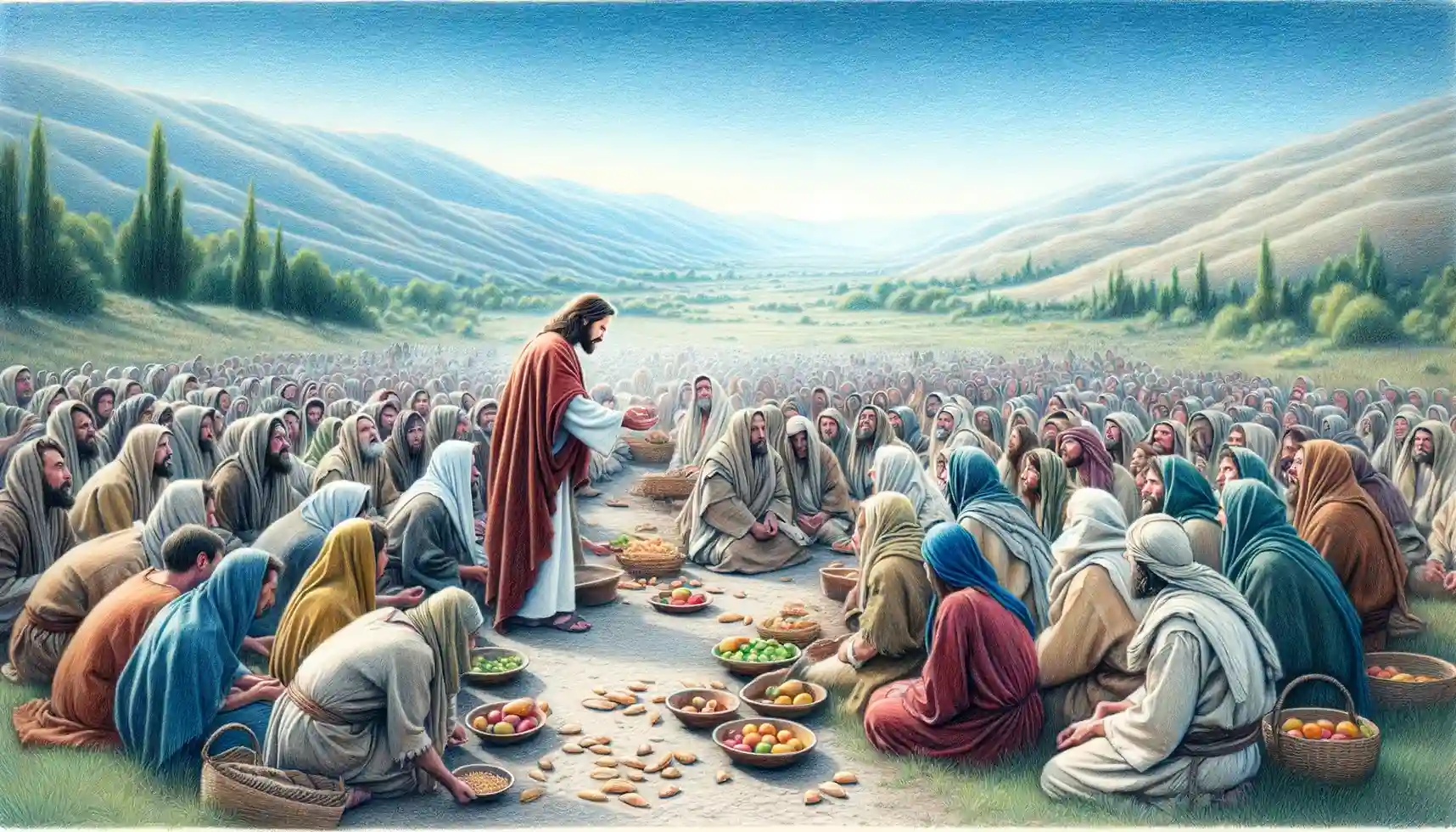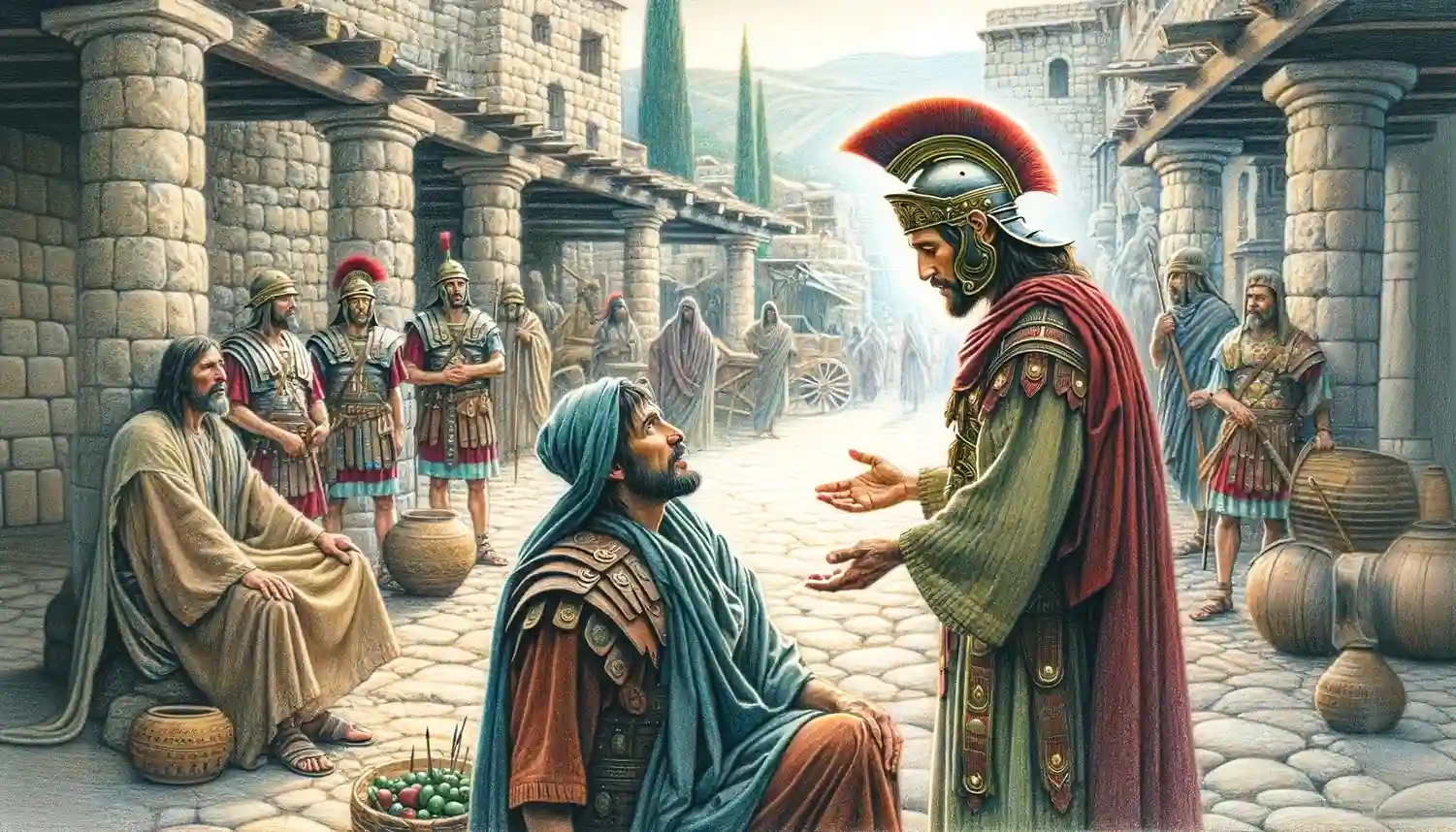The Call of Abram is a foundational event in the Bible, marking the beginning of God’s covenant relationship with Abram, later known as Abraham, as he obeys God’s command to leave his homeland and journey to Canaan, receiving promises of nationhood, blessing, and a global impact through his descendants, highlighting his exemplary faith and the divine initiative in the unfolding plan of salvation.
The image showcases a dramatic landscape scene depicting the biblical confrontation between David and Goliath in the Valley of Elah, with David swinging his sling at the towering Goliath, as both armies watch in suspense.
Isaac, whose birth to the elderly Sarah and Abraham was foretold by God, represents a miraculous fulfillment of divine promise and a key figure in the continuation of the Abrahamic covenant.
Abraham’s life exemplifies unwavering faith and obedience to God. His story is central to understanding the roots of monotheistic belief and the covenant relationship that defines Jewish identity and spirituality.
Abraham’s journeys are not just a tale of migration but a series of divine encounters and faith-building experiences that shaped the patriarch into the father of many nations and a key figure in the Abrahamic faiths.
The shipwreck of Paul is not just a tale of survival but a testament to Paul’s faith and God’s providence, ensuring that Paul’s missionary journey continued despite seemingly insurmountable odds.
Paul, originally known as Saul of Tarsus, was a major apostle to the Gentiles and a foundational figure in the establishment of Christianity, renowned for his dramatic conversion, extensive missionary journeys, and the authorship of many influential New Testament Epistles.
The Feeding of the 5,000, as described in Matthew 14:15-21, is a monumental miracle performed by Jesus Christ, where He compassionately feeds a massive crowd of over five thousand men, excluding women and children, with just five loaves and two fish. This miracle not only demonstrates Jesus’ supernatural ability to provide but also symbolizes His role as the spiritual sustenance for humanity, reinforcing His identity as the Bread of Life.
The Healing of the Centurion’s Servant is a profound biblical narrative found in Matthew 8:5-13 and Luke 7:1-10, which showcases Jesus’ miraculous healing of a Roman centurion’s gravely ill servant from a distance. This event highlights Jesus’ divine authority and the remarkable faith of the centurion, transcending cultural and religious boundaries and emphasizing the inclusivity of Jesus’ ministry to all who believe, regardless of their background.

